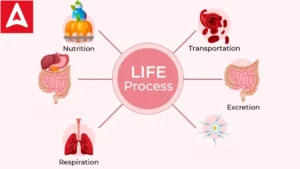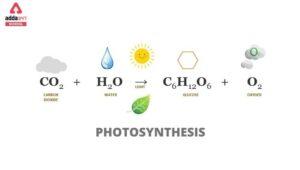Table of Contents
Components of Environment
Components of Environment: The environment is a complex system that encompasses the surroundings, conditions, and elements in which living organisms exist. It consists of various components that interact with one another, shaping the physical, biological, and social aspects of the world.
What are the Components of Environment
Here are the key components of environment:
Atmosphere: The atmosphere is the layer of gases that surrounds the Earth. It consists of nitrogen, oxygen, carbon dioxide, and other trace gases. The atmosphere plays a vital role in regulating temperature, weather patterns, and protecting the planet from harmful solar radiation.
Hydrosphere: The hydrosphere includes all forms of water on Earth, including oceans, lakes, rivers, groundwater, and even atmospheric water vapor. It is essential for supporting life, regulating climate, and serving as habitats for various aquatic organisms.
Lithosphere: The lithosphere refers to the solid outer layer of the Earth, which comprises the crust and the upper part of the mantle. It encompasses the continents, landforms, rocks, minerals, and soil. The lithosphere provides habitats for terrestrial organisms and is a source of natural resources.
Biosphere: The biosphere encompasses all living organisms and their interactions with the other components of the environment. It includes plants, animals, microorganisms, and ecosystems. The biosphere is responsible for the cycling of nutrients, maintaining biodiversity, and supporting life through various ecological processes.
Climate: Climate refers to the long-term patterns of weather conditions in a particular region. It is influenced by factors such as solar radiation, atmospheric circulation, ocean currents, and topography. Climate plays a crucial role in determining the distribution of ecosystems and the adaptation of organisms.
Biotic Factors: Biotic factors are the living components of the environment, including plants, animals, and microorganisms. They interact with one another and with the abiotic factors to form complex ecosystems. Biotic factors play a significant role in shaping the structure and function of ecosystems.
Abiotic Factors: Abiotic factors are the non-living components of the environment, such as temperature, sunlight, water availability, soil composition, and air quality. These factors influence the distribution, behavior, and survival of organisms, as well as the overall functioning of ecosystems.
Anthropogenic Factors: Anthropogenic factors refer to the influences on the environment caused by human activities. These include pollution, deforestation, urbanization, industrialization, and climate change. Anthropogenic factors have a significant impact on the environment and can lead to environmental degradation and ecosystem disruption.
Components of Environment Definition
components of environment is The lithosphere, which consists of rocks and soil, the hydrosphere, which consists of water, and the biosphere, which consists of living things, are the basic components of environment.
Biotic and Abiotic Components of Environment
The surroundings or circumstances in which a person, animal, or plant lives or functions are known as the environment. Ecology of the environment is separated into two parts. The first is the biotic component, also referred to as an organism’s parts. The remaining components, aside from these, are made up of different environments. That is a nonliving or abiotic component. Abiotic elements are the ecosystem’s non-living physical and chemical building blocks. Typically, the lithosphere, atmosphere, and hydrosphere provide abiotic resources. Abiotic elements include things like water, air, soil, sunlight, and minerals.
Components of Environment Class 7
Components of Environment are Hydrosphere, Lithosphere, Atmosphere, and Biosphere. check here for details about these spheres.
Hydrosphere
The total mass of water present on, beneath, and above the surface of a planet, minor planet, or natural satellite is known as the hydrosphere. The hydrosphere on Earth has been present for nearly 4 billion years, yet it is still evolving. The water and land are rearranged as a result of continental drift and seafloor spreading.
On Earth, there is 1.386 billion cubic kilometres of water, according to estimates. Included in this are water’s gaseous, liquid, and frozen states as soil moisture, groundwater, and permafrost in the Earth’s crust; oceans and seas, lakes, rivers, and streams, wetlands, glaciers, ice, and snow cover on Earth’s surface; vapour, droplets, and crystals in the air; and a component of living plants, animals, and unicellular organisms that make up the biosphere.
Atmosphere
A layer (or layers) of gases that surround a planet and are held in place by the gravity of the planetary body is known as an atmosphere. When the gravity is strong and the temperature of the atmosphere is low, a planet preserves its atmosphere. The outer part of a star, which includes the layers above the opaque photosphere, is known as the stellar atmosphere; low-temperature stars may have outer atmospheres with complex molecules.
Lithosphere
A lithosphere is a planet’s or a natural satellite’s stiff, outermost rocky shell. It is made up of the crust and the region of the upper mantle on Earth that exhibits elastic behaviour over periods of thousands of years or longer. Chemistry and mineralogy are used to differentiate between the crust and upper mantle. The crust and uppermost mantle are both parts of the lithosphere, which is the planet’s hard, rigid outer layer. The weaker, hotter, and deeper portion of the upper mantle, known as the asthenosphere, lies beneath the lithosphere. A difference in how each lithosphere and asthenosphere responds to stress defines their boundary.
Biosphere
The biosphere, usually referred to as the ecosphere, is the totality of all ecosystems on the planet. It is also known as the Earth’s life zone. With few inputs and outputs, the biosphere is essentially a closed system with respect to matter. It is an open system in terms of energy, with photosynthesis absorbing solar energy at a rate of about 130 terawatts annually. It is a self-regulating system, though, and it is quite close to energetic equilibrium. According to the broadest definition of biophysiology, the biosphere is the entire ecological system that includes all living things and their interactions, including those with the lithosphere, cryosphere, hydrosphere, and atmosphere.
Anthrosphere
The area of the environment that has been created or altered by people for use in human activities and human homes is known as the anthroposphere, which is also frequently referred to as the technosphere. It is a spherical that is part of the Earth. The Austrian geologist Eduard Suess originally used the phrase in the nineteenth century. American geologist and engineer Peter Haff of Duke University initially suggested the idea of the modern technosphere as a concept. According to estimates, the anthroposphere, or structures and systems created by humans, weighed 30 trillion tonnes as of 2016.
Components of Environment in Hindi (Paryavaran Ke Ghatak)
पर्यावरण के घटक
लिथोस्फीयर, जिसमें चट्टानें और मिट्टी होती है, जलमंडल, जिसमें पानी होता है, और जीवमंडल, जिसमें जीवित चीजें होती हैं, पर्यावरण के मूल तत्व हैं।
पर्यावरण के जैविक और अजैविक घटक
वह परिवेश या परिस्थितियाँ जिनमें कोई व्यक्ति, जानवर, या पौधे रहते हैं या कार्य करते हैं, पर्यावरण के रूप में जाने जाते हैं। पर्यावरण की पारिस्थितिकी को दो भागों में विभाजित किया गया है। पहला जैविक घटक है, जिसे जीव के अंग भी कहा जाता है। इनके अलावा शेष घटक, विभिन्न वातावरणों से बने होते हैं। यह एक निर्जीव या अजैविक घटक है। अजैविक तत्व पारिस्थितिक तंत्र के निर्जीव भौतिक और रासायनिक निर्माण खंड हैं। आमतौर पर, लिथोस्फीयर, वायुमंडल और जलमंडल अजैविक संसाधन प्रदान करते हैं। अजैविक तत्वों में पानी, हवा, मिट्टी, धूप और खनिज जैसी चीजें शामिल हैं।
पर्यावरण के घटक: जलमंडल
किसी ग्रह, छोटे ग्रह, या प्राकृतिक उपग्रह की सतह पर, नीचे और ऊपर मौजूद पानी के कुल द्रव्यमान को जलमंडल के रूप में जाना जाता है। पृथ्वी पर जलमंडल लगभग 4 अरब वर्षों से मौजूद है, फिर भी यह अभी भी विकसित हो रहा है। महाद्वीपीय बहाव और समुद्री तल के प्रसार के परिणामस्वरूप जल और भूमि को पुनर्व्यवस्थित किया जाता है।
अनुमान के मुताबिक पृथ्वी पर 1.386 अरब क्यूबिक किलोमीटर पानी है। इसमें शामिल हैं पानी की गैसीय, तरल और जमी हुई अवस्थाएँ जैसे मिट्टी की नमी, भूजल, और पृथ्वी की पपड़ी में पर्माफ्रॉस्ट; पृथ्वी की सतह पर महासागर और समुद्र, झीलें, नदियाँ, और धाराएँ, आर्द्रभूमि, हिमनद, बर्फ और बर्फ का आवरण; हवा में वाष्प, बूंदें और क्रिस्टल; और जीवित पौधों, जानवरों और एककोशिकीय जीवों का एक घटक जो जीवमंडल बनाते हैं।
पर्यावरण के घटक: वायुमंडल
गैसों की एक परत (या परत) जो एक ग्रह को घेरती है और ग्रहों के शरीर के गुरुत्वाकर्षण द्वारा जगह में आयोजित होती है, एक वातावरण के रूप में जानी जाती है। जब गुरुत्वाकर्षण मजबूत होता है और वातावरण का तापमान कम होता है, तो कोई ग्रह अपने वातावरण को संरक्षित रखता है। एक तारे का बाहरी भाग, जिसमें अपारदर्शी प्रकाशमंडल के ऊपर की परतें शामिल हैं, तारकीय वातावरण के रूप में जाना जाता है; कम तापमान वाले तारों में जटिल अणुओं के साथ बाहरी वातावरण हो सकता है।
पर्यावरण के घटक: लिथोस्फीयर
एक लिथोस्फीयर एक ग्रह या एक प्राकृतिक उपग्रह का कठोर, सबसे बाहरी चट्टानी खोल है। यह पपड़ी और पृथ्वी पर ऊपरी मेंटल के क्षेत्र से बना है जो हजारों वर्षों या उससे अधिक समय तक लोचदार व्यवहार प्रदर्शित करता है। क्रस्ट और ऊपरी मेंटल के बीच अंतर करने के लिए रसायन विज्ञान और खनिज विज्ञान का उपयोग किया जाता है। पपड़ी और सबसे ऊपर का मेंटल लिथोस्फीयर के दोनों हिस्से हैं, जो ग्रह की कठोर, कठोर बाहरी परत है। ऊपरी मेंटल का कमजोर, गर्म और गहरा हिस्सा, जिसे एस्थेनोस्फीयर के रूप में जाना जाता है, लिथोस्फीयर के नीचे स्थित है। प्रत्येक लिथोस्फीयर और एस्थेनोस्फीयर तनाव के प्रति प्रतिक्रिया कैसे करते हैं, इसमें अंतर उनकी सीमा को परिभाषित करता है।
पर्यावरण के घटक: जीवमंडल
बायोस्फीयर, जिसे आमतौर पर इकोस्फीयर कहा जाता है, ग्रह पर सभी पारिस्थितिक तंत्रों की समग्रता है। इसे पृथ्वी के जीवन क्षेत्र के रूप में भी जाना जाता है। कुछ इनपुट और आउटपुट के साथ, बायोस्फीयर पदार्थ के संबंध में अनिवार्य रूप से एक बंद प्रणाली है। यह ऊर्जा के मामले में एक खुली प्रणाली है, जिसमें प्रकाश संश्लेषण प्रति वर्ष लगभग 130 टेरावाट की दर से सौर ऊर्जा को अवशोषित करता है। हालांकि, यह एक स्व-विनियमन प्रणाली है, और यह ऊर्जावान संतुलन के काफी करीब है। बायोफिजियोलॉजी की व्यापक परिभाषा के अनुसार, बायोस्फीयर संपूर्ण पारिस्थितिक तंत्र है जिसमें सभी जीवित चीजें और उनकी बातचीत शामिल है, जिसमें लिथोस्फीयर, क्रायोस्फीयर, हाइड्रोस्फीयर और वातावरण शामिल हैं।
पर्यावरण के घटक: एंथ्रोस्फीयर
पर्यावरण का वह क्षेत्र जो मानव गतिविधियों और मानव घरों में उपयोग के लिए लोगों द्वारा बनाया या परिवर्तित किया गया है, एंथ्रोस्फीयर के रूप में जाना जाता है, जिसे अक्सर टेक्नोस्फीयर भी कहा जाता है। यह एक गोलाकार है जो पृथ्वी का हिस्सा है। ऑस्ट्रियाई भूविज्ञानी एडुआर्ड सूस ने मूल रूप से उन्नीसवीं शताब्दी में वाक्यांश का प्रयोग किया था। अमेरिकी भूविज्ञानी और ड्यूक विश्वविद्यालय के इंजीनियर पीटर हाफ ने शुरू में एक अवधारणा के रूप में आधुनिक टेक्नोस्फीयर के विचार का सुझाव दिया था। अनुमानों के अनुसार, 2016 तक मानवमंडल, या मनुष्यों द्वारा बनाई गई संरचनाओं और प्रणालियों का वजन 30 ट्रिलियन टन था।
Components of Environment PDF
The components of the environment can be broadly categorized into three main types. All Explained in below linked pdf Download Now,
Components of Environment Diagram and Images



 Life Processes: Check Nutrition, Transpo...
Life Processes: Check Nutrition, Transpo...
 CBSE Class 12 Biology Viva Questions wit...
CBSE Class 12 Biology Viva Questions wit...
 Photosynthesis: Equation, Reaction, Diag...
Photosynthesis: Equation, Reaction, Diag...










